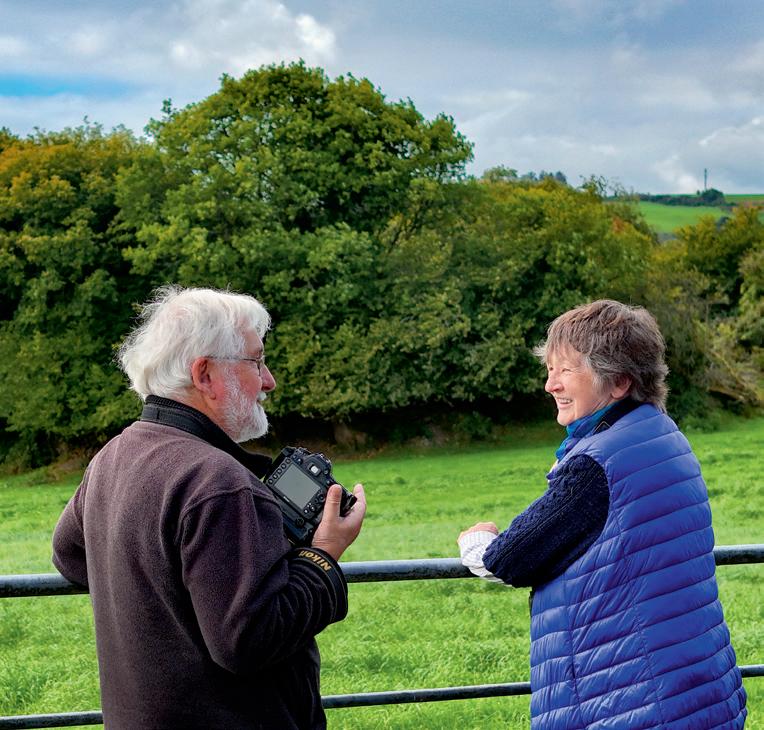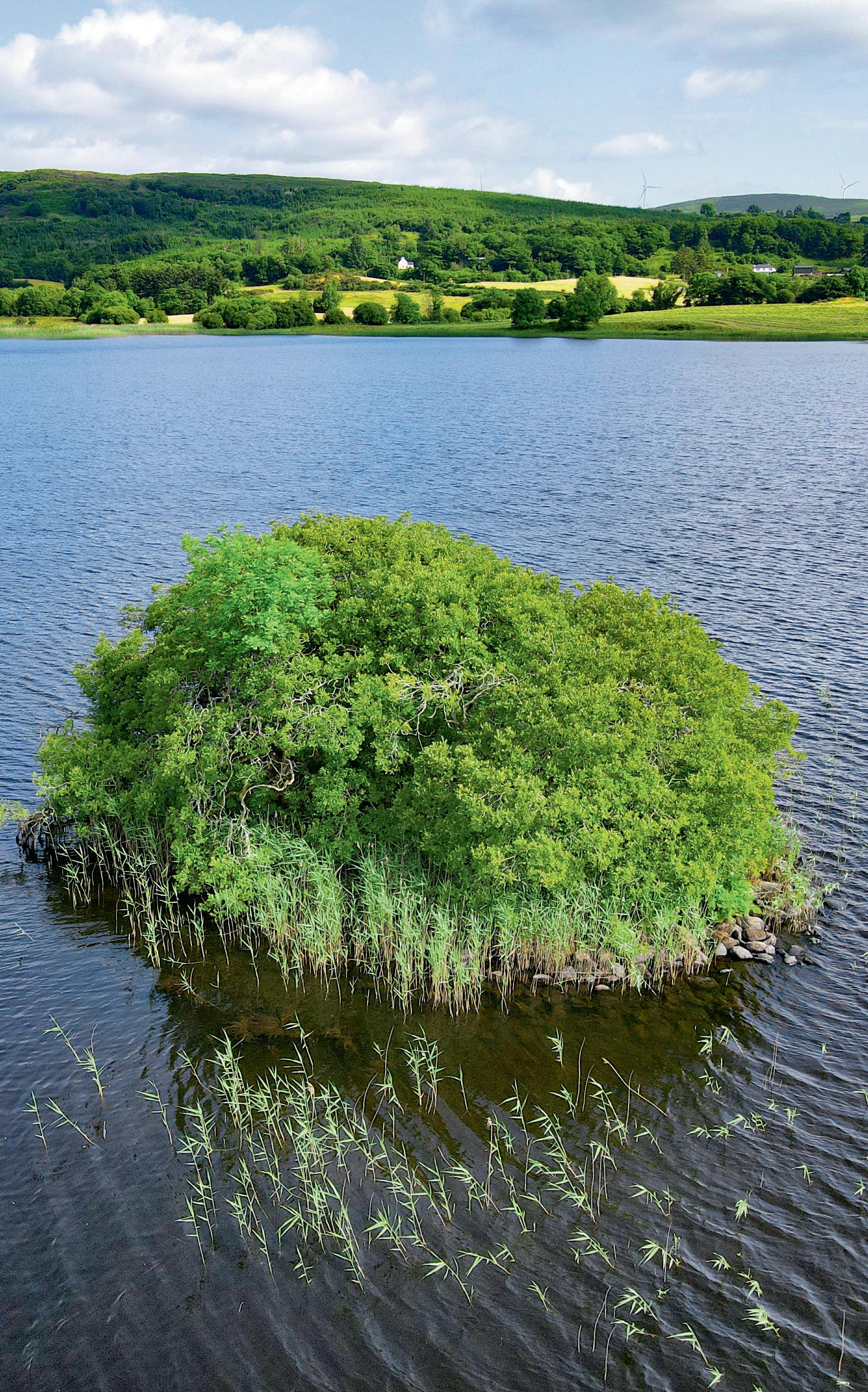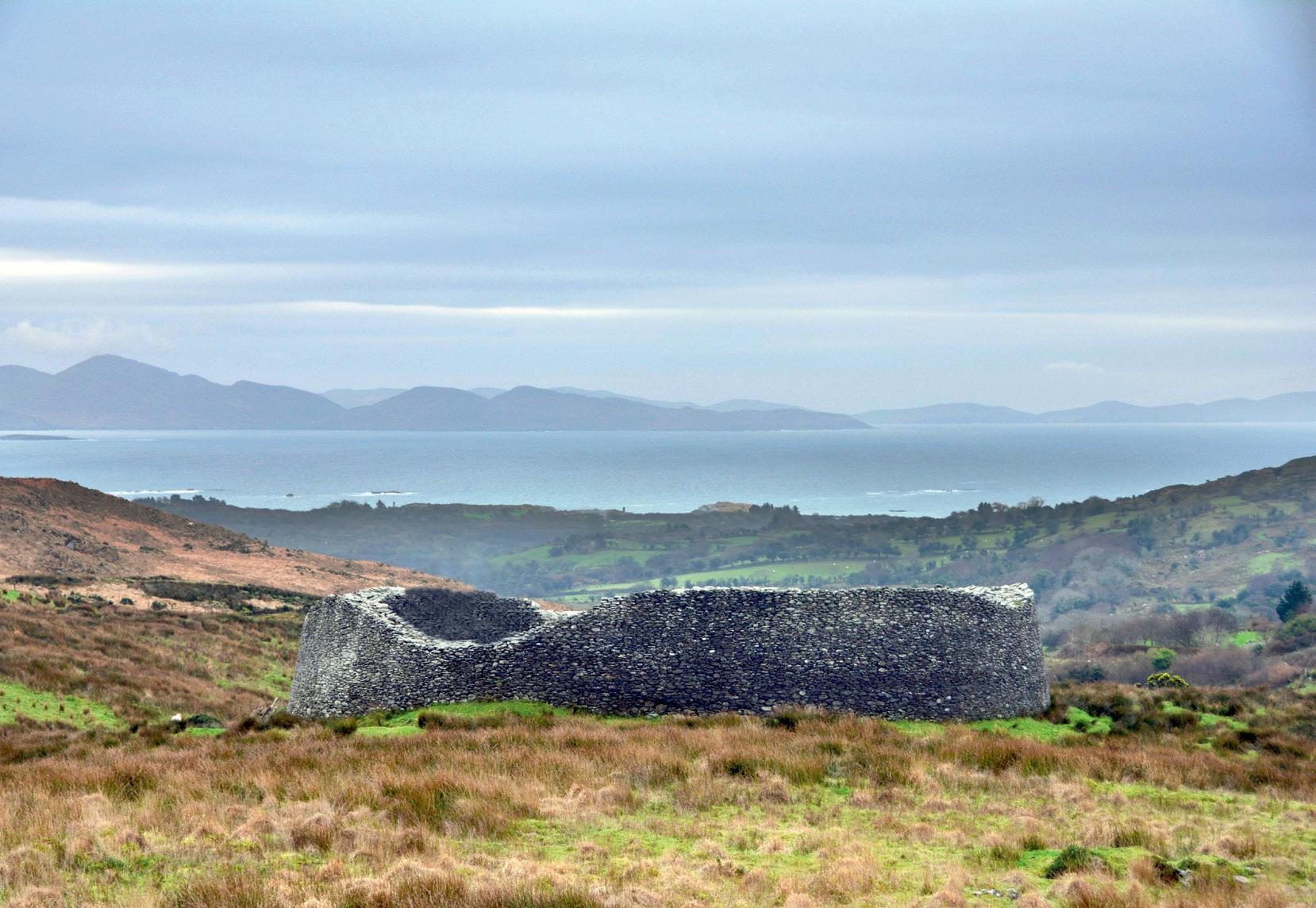Irish FORTS FAIRY
First published 2025 by The O’Brien Press Ltd., 12 Terenure Road East, Rathgar, Dublin 6, D06 HD27, Ireland.
Tel: +353 1 4923333; Fax: +353 1 4922777
E-mail: books@obrien.ie. Website: obrien.ie
The O’Brien Press is a member of Publishing Ireland.
ISBN: 978-1-78849-501-1
Copyright for text © Jo Kerrigan 2025
Copyright for photographs © Richard Mills
The moral rights of the author have been asserted
Copyright for typesetting, layout, design © The O’Brien Press Ltd.
Cover & internal design by Emma Byrne
All rights reserved. No part of this publication may be reproduced or utilised in any form or by any means, electronic or mechanical, including for text and data mining, training artificial intelligence systems, photocopying, recording or in any information storage and retrieval system, without permission in writing from the publisher.
9 8 7 6 5 4 3 2 1 29 28 27 26 25
Printed and bound by Drukarnia Skleniarz, Poland.
Published in
JO KERRIGAN was born and bred in Cork, where she took her first two degrees at UCC before moving to the UK to continue her academic work. After a distinguished career there, including winning the Oxbow Prize for medieval history at Oxford, she returned to her roots to apply her research skills to Ireland’s undiscovered past. A specialist in ancient crafts and folklore, she now devotes herself to exploring how everyday life was lived long ago.
RICHARD MILLS was born in Provence, and moved to Ireland at the age of sixteen. His long and successful career as a press photographer was combined with a passion for wildlife, and his pictures have garnered numerous national and international awards. He was the subject of a TV programme by the wildlife film-maker Éamon de Buitléar, and he has contributed images to hundreds of publications across the world, as well as his own popular book, Ireland’s Bird Life: A World of Beauty.
Jo and Richard live in West Cork, surrounded by books and cameras, cats and dogs. Previous books for O’Brien Press include West Cork: A Place Apart; Old Ways, Old Secrets; Follow the Old Road; Brehon Laws; Stories From the Sea; and All The Way By The Grand Canal.
Dedication
To na Daoine Mhaithe, the Good People, our ancient gods and spirits, who continue to watch over and care for this island of Ireland, this book is most respectfully dedicated.
Acknowledgements and Note on Sources page 6
Chapter
Chapter
Chapter III: Disturb Us At Your Peril!
Chapter IV: Overheard – Or Even Glimpsed? 79
Chapter V: Who Are the Good People? 103
Chapter VI: How Came These Great Stones?
Chapter VII: Hidden in the Landscape
Chapter VIII: Watch for the Changing Seasons
the old beliefs; and the work of Eddie Lenihan, folklorist and protector of the old ways par excellence, was an inspiration.
It should be noted that many of the sites mentioned within this book are on private land, and in cases where the exact location is not given, it is because the landowner expressly asked us not to. Always check and ask permission before visiting any ancient site.
Finally, it may well be pushing our luck even to mention this, but, quite apart from the welcome we received everywhere in the human sphere, a strange number of unusual small problems and accidents occurred throughout our wide-ranging fieldwork, which made us wonder if somebody – or something – was expressing annoyance at our interference with things that are best left alone. If so, and the Good People were responsible, please accept our sincere and respectful apologies. We have dedicated this book appropriately, as a form of compensation.
A perfectly circular ringfort, made by drawing a circle around a central stick.
What Are Fairy Forts?
You will glimpse them, perhaps quite by chance, as you drive along country roads. Unusual grassy circles; strange, tree-covered mounds in the centre of otherwise smoothly tilled fields; the road making a sudden and unexpected diversion around an obstacle that certainly isn’t a rock before returning to its straight route. Once you have got your eye in, so to speak, you will identify dozens of them. Very frequently (given our gentle climate and the enthusiastic willingness of bramble and bush to swallow up anything that stands still for more than a minute), they are too overgrown for you to be certain of what you are seeing. OS maps, unfortunately, rarely show fairy forts, although megaliths and other ancient archaeological features are usually well marked. It is a good idea to consult Google Earth (an extremely recent invention when set against the timescale involved in these features). On Google Earth, these enigmatic earthworks stand out vividly – very clear circular formations in

Just a side note: don’t confuse fairy forts with fairy rings, which are circles of mushrooms or fungi that spring up overnight, seemingly by magic, and last a very short time. They are said to mark places where the fairies have been dancing the night before. Temporary and delightful, they should be noted and enjoyed. However, don’t venture into one, as that carries risks.
‘I remember going out one morning and finding three large perfect circles of mushrooms in a field near us at home,’ recalls Gobnait, who grew up in north Offaly. ‘They were only in that one field, nowhere else. I went home and told my father, and he immediately said, “You didn’t step inside one, did you?”
I said no, and he said, relieved, “Oh, that’s good. You might find you were in another place or another time altogether, and never be able to leave it again.”’ It’s a widespread belief.
A point to note here, though, and one to which this book will return again, is that both fairy forts and fairy rings are
Never step inside a fairy ring. You may not be able to leave again.
circles, never square. The circle is one of the oldest and most powerful symbols in the world, and was especially important to those who dwelt in ancient Ireland. The evidence of its influence can be seen in many surviving features from those times, including not only the aforementioned forts and rings, but also stone citadels, round towers, beehive huts, and of course the magnificent archaeological structures in which this country is so rich, like those at Brú na Bóinne. Even old Irish graveyards were always built in the round, never square or oblong like those of later settlers.
An old Irish graveyard, circular instead of square or oblong.
The circle has of course been central to many religions and beliefs around the world, evolving naturally from observance of the turning of the year, the movement of crops through growth to harvest and disappearance into the earth, only to emerge again anew. Communities living close to nature, as most did in ancient times, would have observed the sun in its progress across the sky every day, going out of sight at night only to return the following morning; the moon waxing and waning over the month, and its effect on the tides; the constantly repeated slow dance of the cyclical round. To build shelters, homes and ritual sites in the same circular pattern was as natural as life itself.
The circle is a powerful form, as practitioners of wicca and other pagan religions know well. Casting a circle, whether for protection against evil influences or to create a charm, is the first thing you do when channelling what power you may need to achieve some important end. Drawing it with salt or white pebbles, lighting differently coloured candles at each point of the compass, or simply making a mental circle to aid concentration, are all familiar to those who work in the old ways. The vital thing is that the circle is unbroken, with no gap left to break the energy or allow malevolent energies to enter.
In ancient Ireland, as in many other venerable cultures, the circle was seen as reflecting the unending Wheel of Life, and was thus reflected and indeed respected in all early building.
As indicated above, even huge and impressive old stone forts or citadels (usually identified as dúns, caiseals, or cathairs), built and occupied over generations by powerful chieftains and kings or used as assembly and inauguration sites, were
A picturesque crannóg on a lake.
The greater caiseals are for the most part preserved, well maintained, open and accessible as tourist attractions. The looming grandeur of Staigue Fort in its deserted Kerry valley, for example; the spectacularly sited D ún Aengus on Inishmore in the Aran Islands; the magnificent Grianán of Aileach, arrogantly bestriding a Donegal hillside; Navan Fort or Emain Macha towering above Armagh. They have been researched and documented, and we do at least have some idea of their history, of who lived there and what battles might have taken place around them. The royal fort at Rathangan in Co. Kildare was even the subject of one of our oldest Irish poems.
Staigue Fort in Kerry, built in the Iron Age as a defensive stronghold for a local king.
countryside. They occasionally have a stone encircling wall, but more commonly merely an earthen ditch, often overgrown and covered with hawthorn, gorse and enthusiastic brambles. A few will have two or even three protective ditches and banks surrounding the central circle, but often these have been eroded by time or filled in by usage of the surrounding fields. The enclosed space may be no wider than fifteen metres or, rarely, may be as extensive as forty metres. (Incidentally, in the ancient Brehon laws, the dimensions dictated for the residence of a tribal king, which would certainly have been a caiseal or dún, was c.140 feet, or 42.56 metres.)
So numerous are they, and so long have they been part of the landscape, that they are virtually taken for granted by local residents (with certain careful provisos, as we will see). Known in Irish as ráths or lios, the briefest glance through a topographical directory or map will show that such features, both the large imposing ones and the smaller ones, though they are not individually identified as a rule, have given their names to innumerable townlands, villages and locations. They have thus remained very much a part of our modern landscape.
Just some examples: Lissarda (the high fort), Lisdoonvarna (the lios at the fort of the gap, a nice example of lios and dún combined in the same place name), Lisduff, Lismore, Liosnapuca. Lisnakea in Co. Fermanagh means ‘the fort of the sceach or whitethorn tree’. It took its name from the celebrated Sceach-ghabhra [Skagowra], under which the Maguire leaders were traditionally inaugurated. Rathmore (the large fort), between Millstreet and Killarney. The town and railway station hug the main road, but south of the conurbation in a quiet field
lies the original Ráth Mór that gave the place its name. Every time the train passes Charleville in Co. Cork, the conductor announces in Irish ‘An Ráth’, which is its proper name, commemorating the ancient ringfort. Rathdangan, Rathpeacon, Ratheenduff (the little black fort), Raheenroe or Raithinruadh (the little red fort). And there are hundreds more to be discovered in every county.
D úns and caiseals are equally numerous, although you might not realise at first what a signpost is telling you. Dunmore, Dun Laoghaire (the fort of Laoghaire), Dunmanway, Dunbeacon, Dunboyne, Dunbrody – the list is endless. Even
This way to the lios at the fort of the gap.







